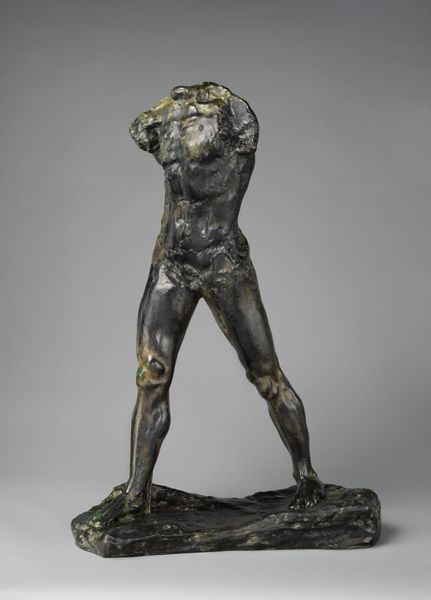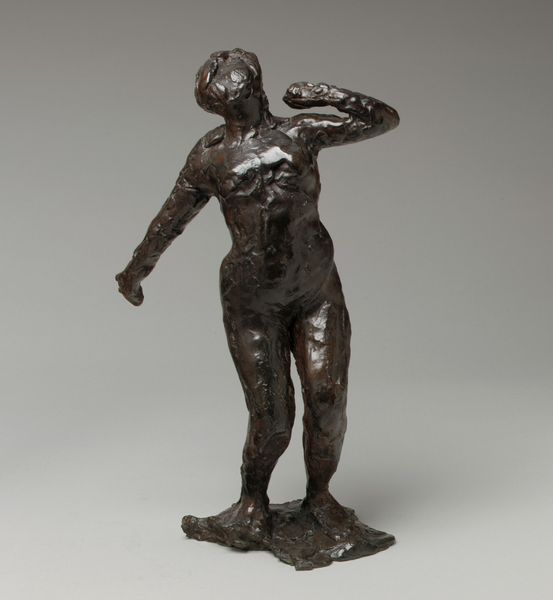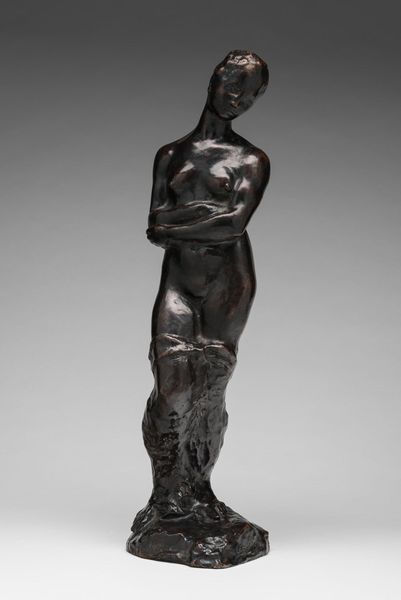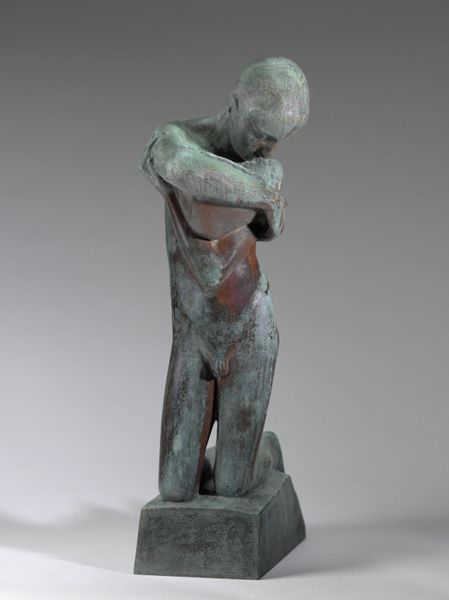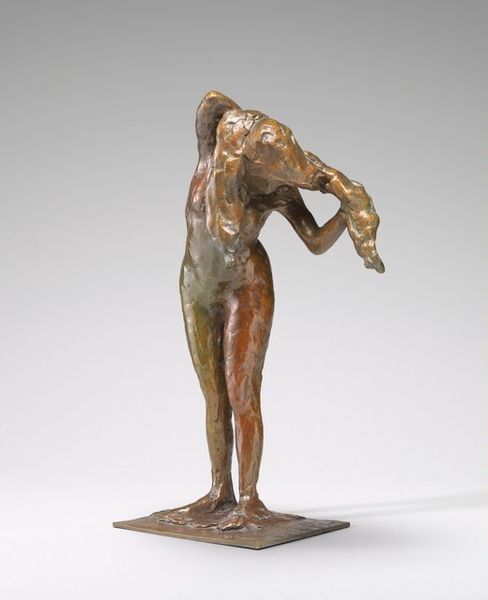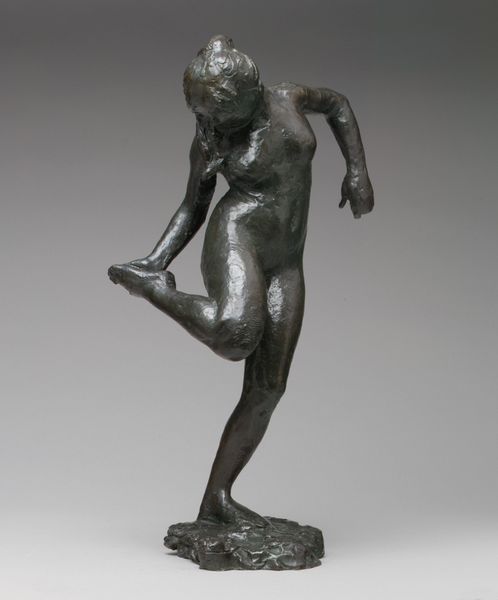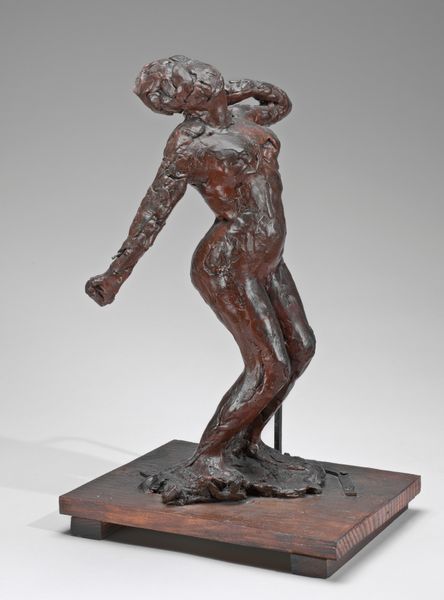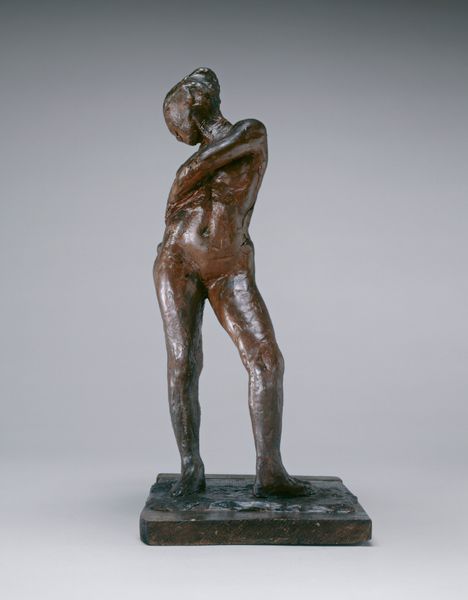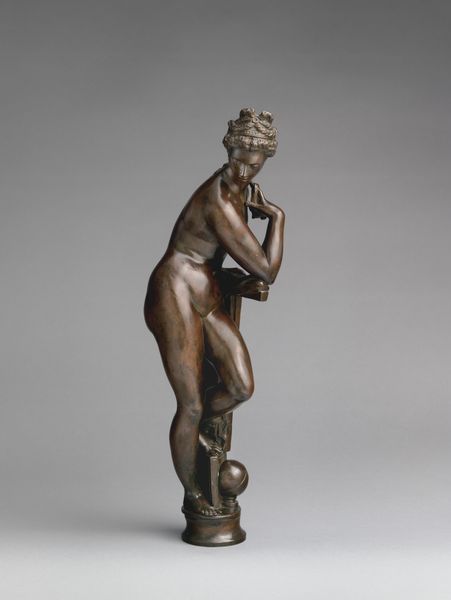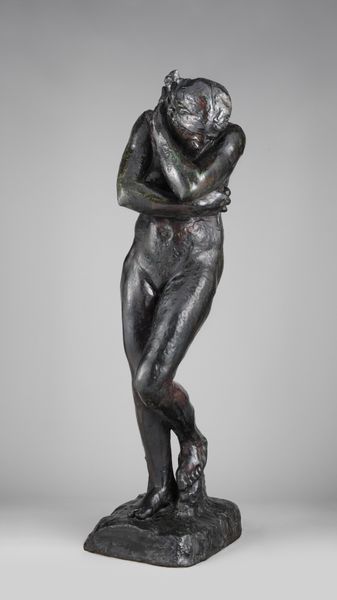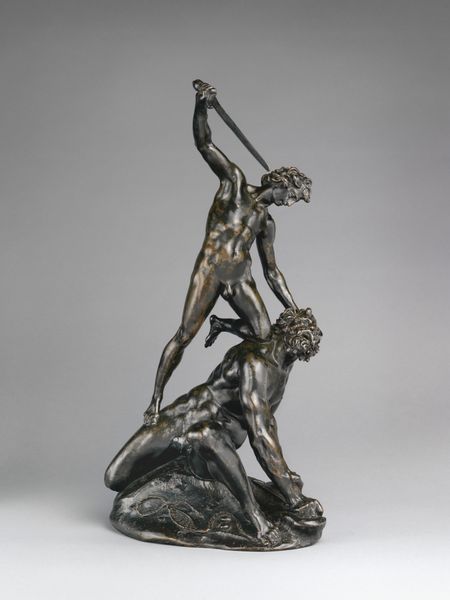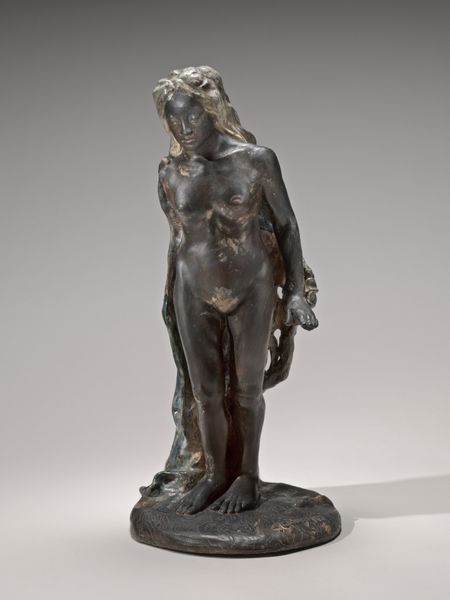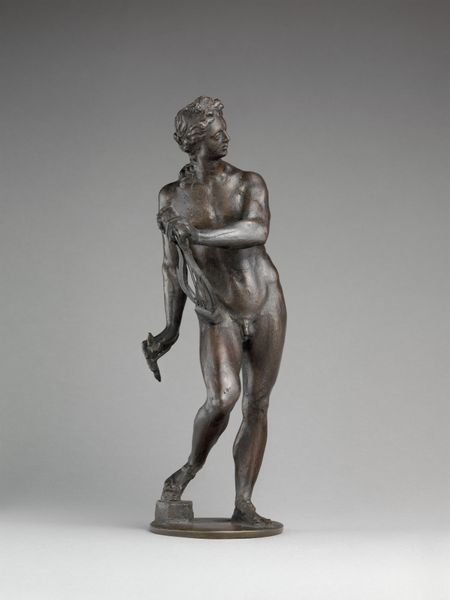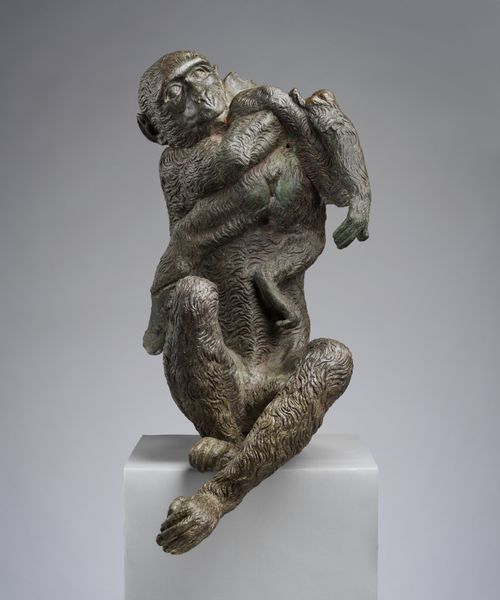
Dimensions: wt. confirmed: 20 1/2 × 10 × 6 3/8 in., 31.1 lb. (52.1 × 25.4 × 16.2 cm, 14.1 kg) Height (with base): 23 in. (58.4 cm)
Copyright: Public Domain
Editor: Here we have Rodin's bronze "Torso," created between 1877 and 1979, currently at the Met. I’m immediately struck by the fragmented nature of it – the sense of incompleteness. How do you interpret that, given Rodin’s focus on realism? Curator: The "Torso," especially within the timeframe you mentioned, speaks volumes about Rodin’s engagement with the complexities of representation itself. Think about the political and social undercurrents of the late 19th century, where traditional academic notions of the ideal body were being challenged. The fragment, in this context, becomes a powerful symbol, doesn't it? A symbol against the very idea of a singular, flawless ideal. What does the incomplete body signify to you in our contemporary moment? Editor: I see it as a challenge to conventional beauty standards and potentially a reflection on the imperfect human condition. Does it suggest a kind of vulnerability by revealing only a fragment? Curator: Precisely. And beyond individual vulnerability, consider the social implications. Who gets to be represented? Whose bodies are deemed worthy of admiration, whole or otherwise? By presenting a fragment, Rodin disrupts the power dynamics inherent in the act of representing the body. Is this a move towards inclusivity, a silent protest against the normatively enforced physical ideal? Editor: So, it is almost a conscious commentary through form and subject matter. The absence becomes a powerful statement. Curator: Absolutely. Consider also the materiality of the bronze itself. The rough, textured surface is hardly idealized, is it? This too challenges conventional notions of beauty. We should not see Rodin's sculpture in isolation, but through intersectional lenses informed by feminist theory and cultural studies. What did you find surprising when looking at this artwork? Editor: I am most surprised by how timely this piece still feels! The conversation continues… Curator: Indeed. Art serves as a conduit. Thank you for your insights.
Comments
No comments
Be the first to comment and join the conversation on the ultimate creative platform.
